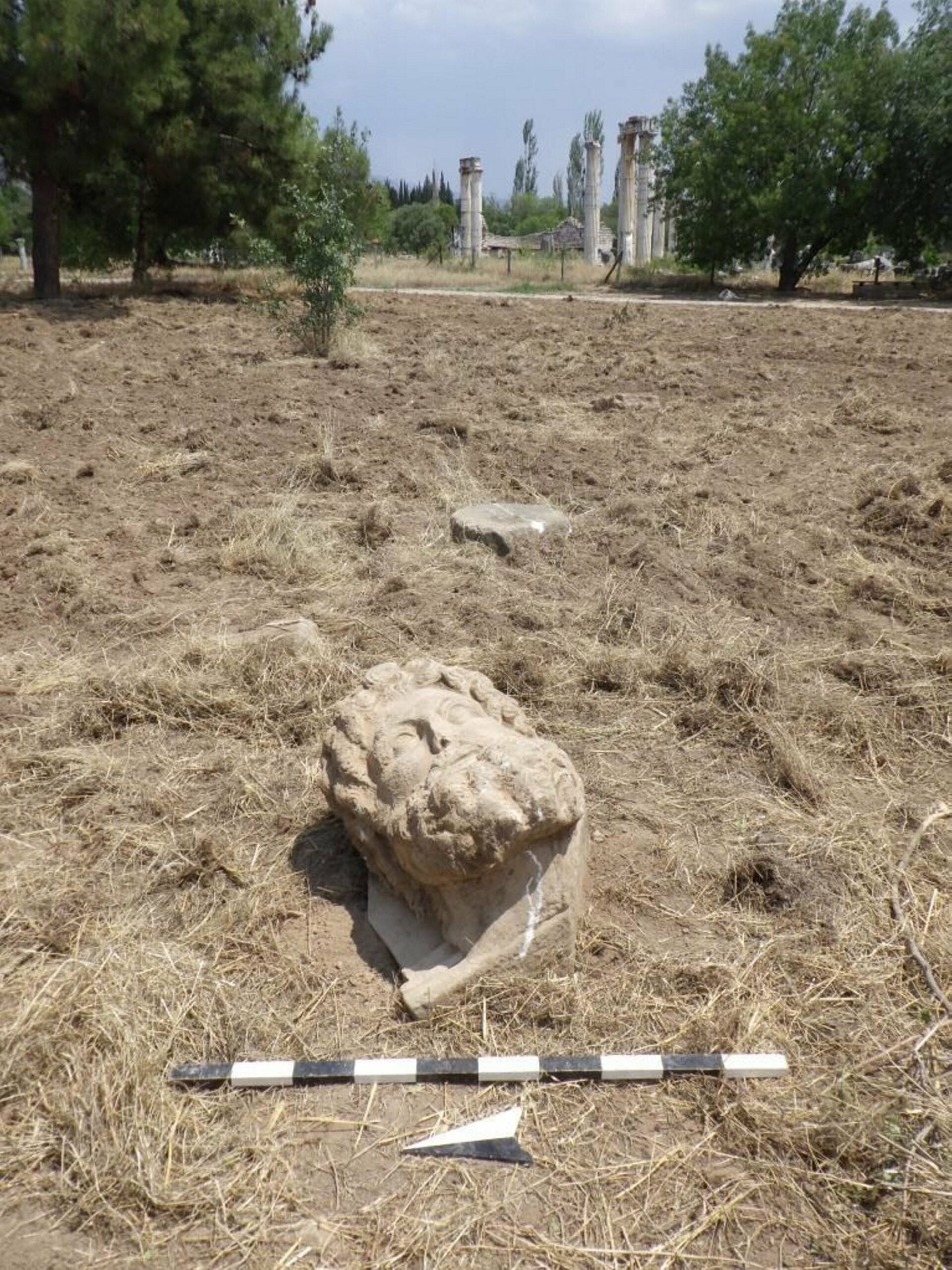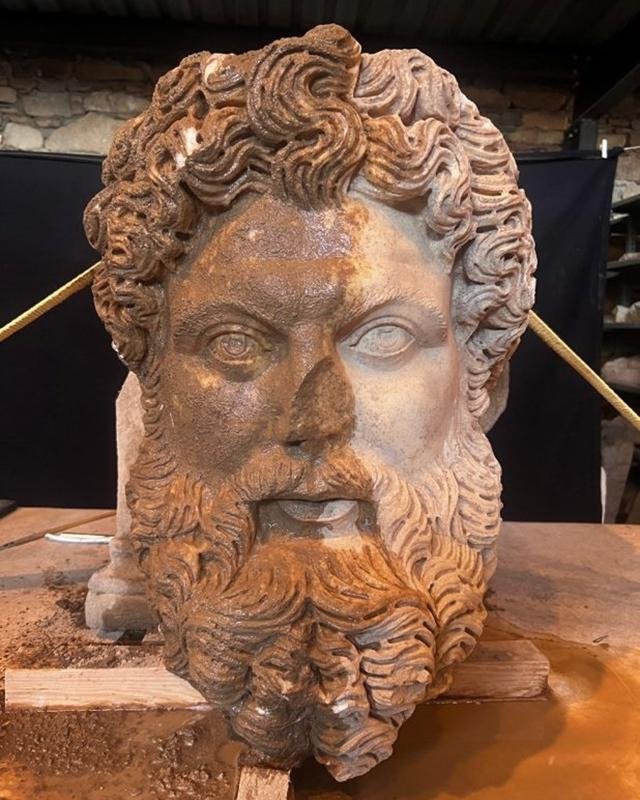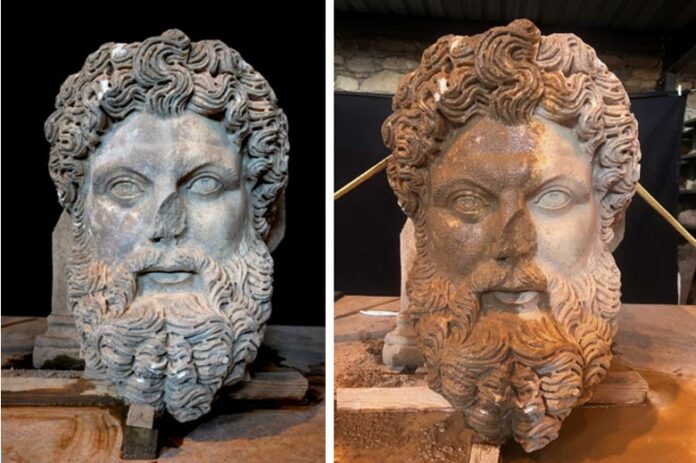A recent excavation in the ancient city of Aphrodisias has drawn considerable interest from both historians and art lovers. The dig site near the Sanctuary of Aphrodite Aphrodisias has revealed a bearded marble head, thought to be a representation of Zeus, the supreme deity in Greek mythology. This discovery contributes further to the extensive collection of artifacts from Aphrodisias, a city celebrated for its art and sculptural heritage.
The Importance of Aphrodisias Historically
Aphrodisias, a significant Greek Hellenistic city located in what is now Turkey’s Caria region, was named for Aphrodite, the goddess of love. The city was a central religious site devoted to her worship, featuring the Sanctuary of Aphrodite. Aphrodisias was renowned during ancient times for its exceptional artisans and schools of sculpture, whose works adorned buildings and were exported across the Hellenistic and Roman empires.

Artistic Discoveries in Aphrodisias
The area around the city’s agora has yielded many artifacts, including complete statues, experimental pieces, and incomplete sculptures, underscoring Aphrodisias’ rich tradition in sculpture. These discoveries shed light on the city’s artistic endeavors and provide a glimpse into its cultural vibrancy during ancient times.

Decline Following Disaster
In the early 7th century AD, Aphrodisias was struck by a devastating earthquake that led to significant destruction. The city was reduced to a minor fortified community centered around what was once the Odeon theater. Despite this setback, the artistic legacy of Aphrodisias continued to be celebrated.
The Latest Excavation
Turkey’s Minister of Culture and Tourism, Mehmet Nuri Ersoy, recently announced that the latest excavation near the Sanctuary of Aphrodite unearthed a marble head with a beard, believed to be part of a building’s decorative features. Archaeologists have determined that this sculpture represents Zeus, the omnipotent god of the sky and ruler of Olympus.

Minister Ersoy’s Remarks
Minister Ersoy commented on the discovery, stating, “This marble head, now exposed to daylight after centuries, manifests the grandeur of Zeus, the central figure in Greek mythology.” The artifact, which dates from the 2nd or 3rd century AD, stands 66 centimeters tall and is carved from a single piece of the local Aphrodisias marble, known for its medium grain.
Demonstrating Artistic Mastery
The detailed carving of the hair and beard of the marble head highlights the exceptional skill of Aphrodisias’ sculptors. Minister Ersoy noted, “The exquisite craftsmanship seen in the hair and beard is characteristic of a premier Aphrodisias workshop. This depiction powerfully conveys Zeus’ divine image.” This level of craftsmanship underlines the artistic mastery that Aphrodisias was famous for.
Conclusion
The uncovering of the marble head of Zeus underscores the enduring legacy of Aphrodisias as a hub of artistic excellence. As further artifacts are discovered within the ruins, they offer a glimpse into the cultural and artistic prowess that thrived in Aphrodisias. This recent find not only enhances our comprehension of ancient Greek art but also underlines the historical importance of Aphrodisias in the context of the Hellenistic and Roman periods.




